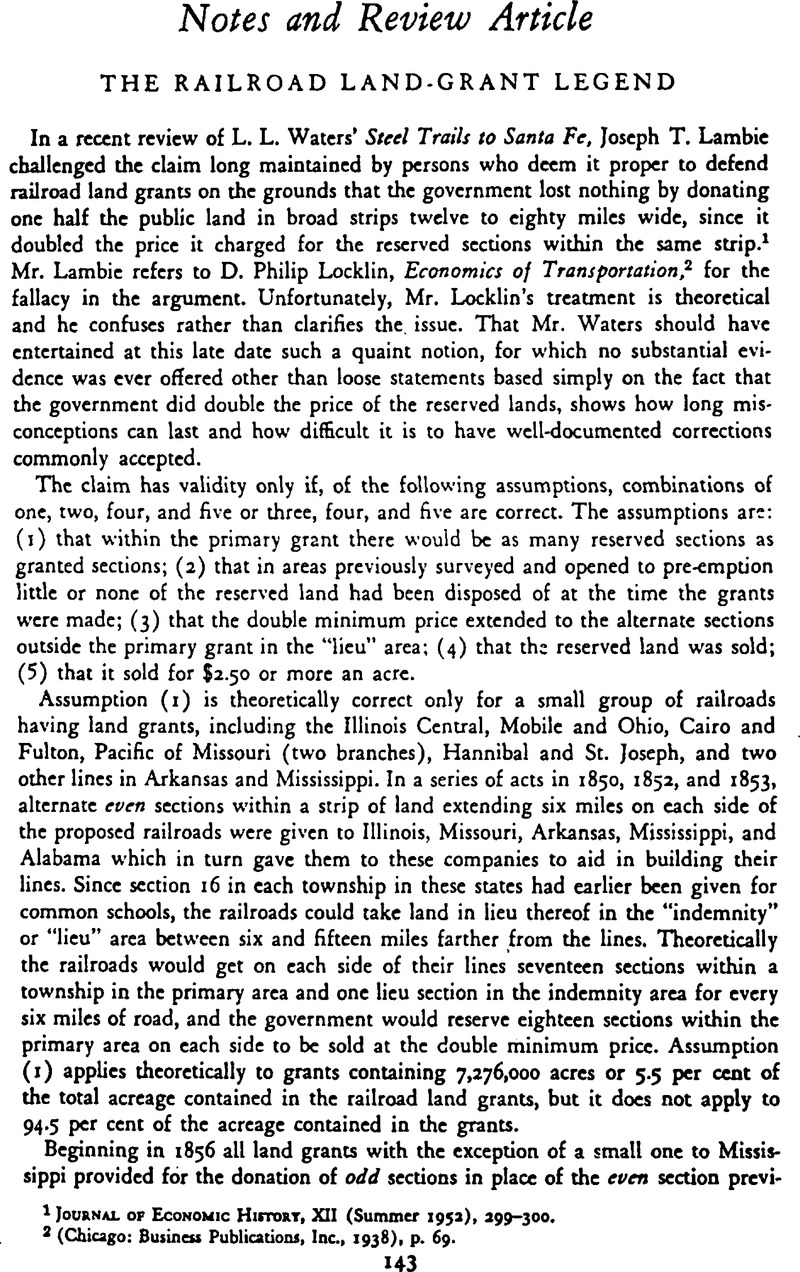Published online by Cambridge University Press: 03 February 2011

1 Journal of Economic Histori, XII (Summer 1952), 290–300.Google Scholar
2 (Chicago: Business Publications, Inc., 1938), p. 69.
3 United States Statutes at Large, Vols. IX–XIV.
4 In Arizona and New Mexico four even-numbered sections were reserved for common schools, hence the Santa Fe (Atlantic and Pacific) received 25 per cent more land in these states than the government retained at the double minimum price.
5 I have developed this point in my Illinois Central Railroad and Its Colonization Work (Cambridge: Harvard University Press, 1934). pp. 105 ffGoogle Scholar.
6 David M. Ellis, “The Forfeiture of Railroad Land Grants,” master's thesis, Cornell University Library; and the same author's “The Forfeiture of Railroad Land Grants, 1867–1894,” Mississippi Valley Historical Review, XXXIII (06 1946), 27 ffGoogle Scholar.
7 Emigrants' Guide to the Kansas Pacific Railway Lands (Lawrence, 1871), p. 3.Google Scholar
8 A larger amount was patented to the Leavenworth, Lawrence, and Galveston in the Osage reserve, but the Supreme Court later ordered the return of 186,936 acres. (92 US. Reports, 733 ff.)
9 Description of the Alchison, Topeka and Santa Fe Railroad Company Lands in South Central and South West Kansas (ca. 1881), a folded brochure.
10 16 US. Stat. at L. (1870), 321Google Scholar.
11 Act of March 3, 1879, 20 US. Stat. at L. (1879), 472Google Scholar.
12 Computed from Annual Reports (Commissioner of the General Land Office, 1863–1890, 1932)Google Scholar.
13 For other corrections of the treatment by historians of railroad land grants, sec Henry, Robert S., “The Railroad Land Grant Legend in American History Texts,” Mississippi Valley Historical Review, XXXII (09 1945), 171–94,CrossRefGoogle Scholar and the numerous replies to Colonel Henry's criticisms in the same journal, XXXII (March 1946), 557–76.